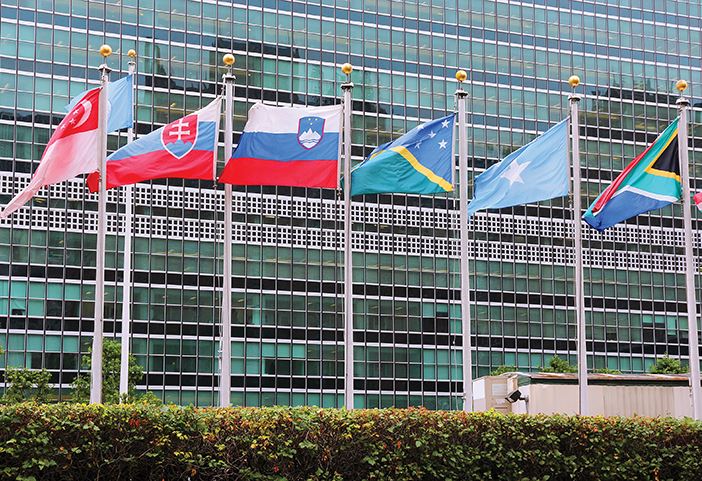By: Andrej Sekulović
At the plebiscite on 23 December 1990, the Slovenian nation clearly opted for its independence. In doing so, Slovenia showed the world that it no longer wanted to be part of the Yugoslav »brotherhood and unity« imposed by the Communists on all the people of Yugoslavia in order to erase their national identities and invent a new Yugoslav nation in its Marxist-multi-ethnic laboratory.
fter 45 years, it became clear that the Communists’ experiment had not worked, and Slovenia decided to follow its own path. Half a year later, on 27 June 1991, it showed to the world that it was prepared to defend its right to sovereignty and self-determination, with weapons if necessary. After a ten-day war and the defeat of the YPA forces, the old nation with a new country had to deal with the recognition of its newly formed state on the international stage, which entailed other countries’ recognition of an independent Slovenia as well as laying the foundations for future international relations.
The first international recognitions of Slovenian independence
The first recognition of the Republic of Slovenia came from Croatia on 26 June 1991, as the two countries leaving Yugoslavia mutually recognized each other. This was followed by the recognition of the newly formed Baltic states and the states that were in solidarity with Slovenia, as they themselves had just freed themselves from the communist grip of the Soviet Union. The first of these countries was Lithuania, which recognized the independence of the Republic of Slovenia on 30 June. Soon, in August, our country was recognized by Georgia and Latvia, and by the end of the year, also by Estonia, Ukraine and Belarus. Among the more influential Western European countries, the Federal Republic of Germany and Sweden announced the recognition of Slovenia’s independence on 19 December 1991, followed by Iceland that also recognized Slovenia on the same day. The recognition of Germany and Sweden officially entered into force on 15 January 1992 when Slovenia was also recognized by the members of the European Community and some other European countries. At that time, Slovenia was also recognized by our neighbours, Austria and Hungary, and a day later by Italy. The Holy See also played an important role in the international recognition of Slovenia.
Important recognition from the Vatican

On 13 January 1992, the Holy See was amongst the first to recognize Slovenia’s independence and autonomy. Many believe that this very recognition of the head of the Roman Catholic Church was decisive for the recognitions of other European countries and the European Community that followed on 15 January. The Pope at the time, John Paul II, who, as a Pole, had experienced first-hand life under harsh communist rule, personally advocated for the recognition of Slovenia. Furthermore, despite the usual diplomatic procedures, he decided to recognize Slovenia in mid-January 1992. It is believed that the Holy See had been closely monitoring the situation in Yugoslavia and particularly in Slovenia since the end of 1990, when the plebiscite was held. In early 1991, the Vatican called for respect of the right to self-determination, for the rights of national communities, against the use of force in resolving misunderstandings, for seeking dialogue and for peaceful co-existence between the people of Yugoslavia with mutual respect and justice. These principles were a clear sign of support for Slovenia’s efforts for a free and independent state. The Pope made similar demands in his speeches on 30 January, 21 April, 8 May , and 23 May 1991 as well as internationally at the meetings of the Conference on Security and Cooperation in Europe. On 20 December 1991, the Vatican defined its position on the Yugoslav crisis in more detail and set its conditions for the recognition of independence and autonomy for Slovenia and Croatia. On 13 January 1992, both countries agreed to comply with these conditions, which led to the official recognition by the Holy See of Slovenia and Croatia.
Recognitions of other countries
The first overseas country to recognize Slovenia as a sovereign and independent country was Canada, which joined the aforementioned European countries on 15 January 1992. Russia recognized our country on 14 February 1992, followed by Japan in March. The United States recognized Slovenia’s independence on 7 April 1992, and China twenty days later. In 1992, Slovenia was recognized by several other countries from different continents and it joined the United Nations on 22 May 1992. Less than a year after joining the UN, on 14 May 1993, Slovenia was admitted to the Council of Europe. Slovenia was recognized by 190 countries, but for reasons unknown, it has still not yet been recognized by some countries, which might be due to negligence and absence of diplomatic contacts. These countries include Zimbabwe, the Central African Republic, Chad, Kiribati, the Solomon Islands, Lesotho, Swaziland and Cape Verde.

